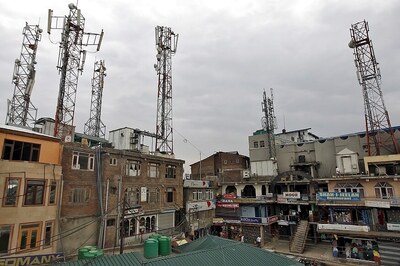
views
The last 200 years have seen unprecedented growth in industrialisation. This coupled with doubling of world population from about 4 billion to 7.9 billion over the last 45 years has led to increased pressure and consequent interference with the environment, leading to doubling of natural disasters over the last 20 years. A key adverse impact has been heatwaves.
Recently, India pulled out of its global commitment to make up for the wheat supply to the world on account of the Russia-Ukraine conflict as its own production estimates had to be revised downwards. The downward correction was on account of intense heat spell during the end of the Kharif crop cycle, which adversely impacted wheat production. This is an early warning sign of the impending crisis, if any further proof is needed. Heatwaves are going to be our biggest challenge over the next 10 years, and even longer, if steps towards mitigation are not initiated immediately, especially in a developing country like ours.
India, being the second-largest country in the world with a population of 1.38 billion people, contributes to 17 percent of the world’s population. India has seen emissions increase by a staggering 300 percent since 1990, making it now the third-biggest carbon emitter worldwide after China and the US. It contributes to seven percent of global Greenhouse Gases (GHG) emissions, with cattle, coal power plants, and rice paddies contributing to the country’s major sources of emissions. However, per capita emissions in India are still considerably lower than in many other countries, at just 1.77 metric tons per person.
India as a country is highly dependent on fossil fuels to meet its energy requirements, with 68.7 percent of GHG emissions coming from the energy sector alone. Agriculture, industrial processes, land-use change and forestry, and waste contribute 19.6 percent, 6.0 percent, 3.8 percent and 1.9 percent respectively to the overall pie. No doubt India clocked consistent growth of around 6-8 percent over the last three decades barring a few low growth years; however, with growth comes the adversities in terms of emissions of GHGs and a warming climate.
PRECIS, an atmospheric modelling tool developed by the Met Office Hadley Centre of the UK, has predicted that India will be a much warmer place to live in with temperature increase by 3-4.5°C by the end of the century due to heat-trapping gases leading to rising sea levels, increased climato-meteorological disasters like droughts and floods. This in turn would lead to food insecurity, displacements and conflicts, wars over natural resources, increase in vector borne diseases, mental health illnesses, malnutrition and deaths for our coming generations.
Also, a large section of India’s population depends upon climate-sensitive sectors like agriculture and forestry for its livelihood. Agriculture feeds a growing population, employs a large labour force, and provides raw material to agro-based industries. Adverse weather events are known to disrupt cropping cycles, reduce agricultural productivity, result in crop failures and consequently impact farm incomes. This, coupled with low agrarian per capita incomes and low adaptive capacity of the majority of agriculture dependent population, renders them vulnerable, particularly to the impacts of climate change on coastal areas and fisheries. Hence, India is highly vulnerable to adverse impact on livelihood and overall societal well-being caused by climate change. India thus has reasons to be concerned about climate change.
The government is getting increasingly cognizant of this adverse writing on the wall. India signed the National Action Plan for Climate Change Control (NAPCCC) in 2008 and pledged to rely on renewable energy sources to fulfil its energy requirements. Recently, the government has also proposed ‘Panchamrita’ concoction for climate conundrum at COP26 in Glasgow and promised to inter alia build up by 2030 its non-fossil energy capacity to 500 gigawatt, meet 50 per cent of its energy requirements with renewable energy with the help of technology transfer and low-cost international finance.
It has also pledged to reduce its projected carbon emission by one billion tonnes and the carbon intensity of its economy by 45 percent through additional forest and tree cover, mobilise domestic and additional funds from developed countries to implement mitigation actions, and build capacity, create a domestic framework and international architecture for quick diffusion of cutting edge climate technology, and for joint collaborative research and development for future technologies.
Last but not the least, it has also promised to achieve net-zero emissions by 2070. Increasing taxation on gasoline cars, subsidising electric vehicles, improving the last mile connectivity, increasing the green cover, subsidising public transport will all go a long way to help these causes.
However, government policies alone cannot fulfill the said promises till it is supported by the population at large. We cannot assume that a sustainable well designed government policy alone will drive the population to have sustainable behaviours as well. There is a need to work upon the socio-behavioural aspects and to increase consciousness amongst people. Acting on climate change represents a trade-off between short-term and long-term benefits, which is the hardest trade-off for people to make. Decades of work point out that we overvalue benefits in the short term relative to benefits in the long term. It is this aspect that needs to inform our public policy.
Adaptation strategies to grow less water-intensive crops, reliance on less water-intensive grains like bajra, wheat, Jowar for our daily needs, opting for vegetarian options like soya instead of meat, will help reduce the carbon imprint. Sustainable architecture to minimise the negative environmental impact of buildings through improved efficiency and moderation in the use of materials, energy, development space and the ecosystem at large is the need of the hour. Higher efficiencies in public transport and increased fiscal benefits to the renewable energy sector should remain the government’s top priority.
Time is running out and we need to act fast.
Read all the Latest News , Breaking News , watch Top Videos and Live TV here.




















Comments
0 comment